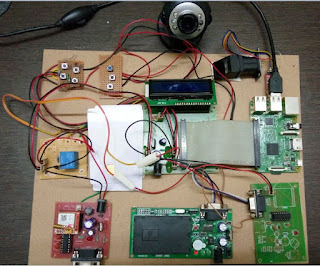EMBEDDED SMART ELECTRONIC VOTING MACHINE
ABSTRACT:
The
Project Embedded Voting System using Raspberry Pi 3 board is an interesting
project which uses Raspberry Pi 3 as its brain. The project is designed for
four contestants. Voters can poll their vote to any one of the contestant.
In
this project, we are using the smart card reader to read the cards assigned to
the voters before voting, which contains all his details. Besides that the
fingerprints of all the voters are also enrolled. The voters mobile numbers are
also collected. The fingerprint module
was connected to one of the four USB ports of the Raspberry Pi 3 using the USB
to TTL converter. The smart card reader and the GSM modem are connected to the
Raspberry Pi 3 UART port via Relay.
When
the person going to cast his vote, he should read his unique card and test his
enrolled fingerprint by using the smart card reader and the finger print module
respectively, if both are matches then he should allow casting the vote. After cast
his vote by pressing the switch corresponding party, he could get the instant
SMS to his enrolled mobile number. And also the USB web camera provided in the
polling booth will trigger and take the snap shot of the person voting and send
that to the FTP web server via Wi-Fi module. For the Wi-Fi module, we should
provide the internet connection via Wi-Fi router or by using the mobile hot
spot.
If
the voter try to vote his vote by using the unauthorized card or by using the
fake fingerprint, then he was not allowed to cast his vote and the USB web
camera take the snap of that person and also sent to the FTP file server.
The
election commission persons only have the confidential credentials to open the
FTP server and they can open it and check the photos and can downloads if they
want.






